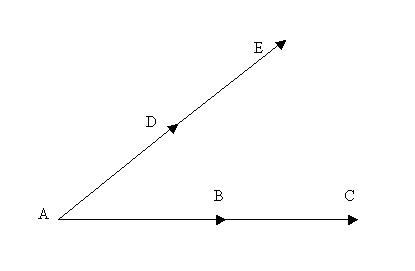Problem E
The Hazard of CSE Department!
Input: standard input
Output: standard output
The department of Computer Science & Engineering of BUET is arranging a programming contest for the young programmers of the department. The teachers have prepared eight problems for the contest. The teachers have also written the judge solution for seven problems and after that they have gone home to enjoy Christmas and EID Vacation. But the Head of the Department and also the BUET contest team coach are still in the Department. They have discovered that the judge solution of one question is still not written. But both of them are so exhausted with the preparation of the contest that they have no strength to write the judge solution for another problem. Shahriar Manzoor a not so young student of that department is then asked to write the solution and it is found out that he is not as good a programmer as he pretends to be. He has no idea what so ever of how to solve the problem. The problem is stated below. See if you can help out the exhausted teachers.
From a given point A, a person covered a certain distance d in a certain direction and reached a point B and then he maintained that direction and reached a point C after he had covered a distance e. Then he came back to point A and did the same thing covering the same amount of distances in each step but may or may not be in another direction and got two similar points D and E. Here, D is similar to B and E is similar to C. The point C, D and B, E are then connected. CD and BE intersects at a point P (or in some case on a line P). The problem is that after one week that person forgot if the distance e was measured from A or from B (in case of the second journey point D). He remembered one thing that in both cases he followed the same strategy. He also discovered that if e<d he could assume that the distance was not measured from A but in other cases he was unsure. Given the equation of the line AC and AE and the value of d and e you will have to determine the equation of the line AP (if possible). When there are infinite numbers of AP the determination of AP is impossible. The determination of the equation of AP is also impossible when point A is at infinite distance. Keep one thing in mind that the alphabetic symbols of this questions are case sensitive. That is A and a are not the same. One of the angles between the two walking directions will be less than 180 degree.

Input
The input contains and integer N at first, which is the number of test cases, then followed by N test cases. Each test case contains two lines with three integers and one line with two integers. The two lines with three integers contain the integers p, q, r and s, t, u (-1000>= p, q, r, s, t, u <=1000) respectively where the Equation of AC is px + qy + r = 0 and the equation of AE is sx + ty + u = 0 and the last line with two integers are the values d (d>=0 & d<=1000) and e (e>=0 & e<=1000).
Output
For each line of input output the coefficients of the equation of AP. The equation is of the form x
+ by + c = 0 (when the absolute
value of the coefficient of x is greater than the absolute value of the
coefficient of y or even equal) or of the form ax + y + c = 0 (in other
cases). The output will be in floating point format with three digits after the
decimal. If the Equation of AP is not determinable print the line “Equation not found.” As a line denotes two directions so you may
be confused which direction to take. In that case you may get finite numbers of
equations of AP. Print all those equations according to the rule specified
above, according to the sample output and in ascending order of their slopes.
The numbers in the output are separated by a single space.
Sample Input:
1 0 0
0 1 0
10 20
1 2 3
4 5 6
0 0
Sample Output:
1.000 1.000 0.000
Equation not found.
_____________________________________________________________________________________________
Shahriar Manzoor
16-12-2000